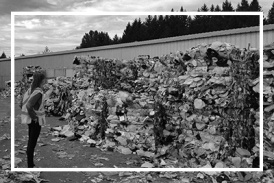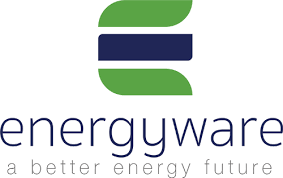Top 10 Solar Challenges Homeowners Face in 2025 — And How EnergyWare LLC Is Helping Families Save
EnergyWare LLC helps homeowners navigate rising solar costs, new policies, and battery needs in 2025 — with incentives to maximize savings.
Yet in 2025, the path to going solar has grown increasingly complex. From shifting policies to rising equipment costs, many families are encountering unexpected challenges on their solar journey.
Industry experts say education, transparency, and trusted partnerships are now more critical than ever. And companies like EnergyWare LLC — a national leader in residential and commercial solar — are stepping up to help homeowners make smarter decisions in a rapidly changing market.
The State of Solar in 2025
According to the Solar Energy Industries Association (SEIA), U.S. solar capacity is projected to surpass 180 gigawatts this year — a new record. Federal incentives remain strong, and states from California to New Jersey continue investing in distributed energy programs.
But even as demand grows, so do consumer concerns. Based on nationwide market analysis, here are the Top 10 issues homeowners face with solar in 2025:
1️⃣ Rising Equipment and Installation Costs
Supply chain constraints, inflation, and surging demand have driven solar panel and battery prices higher — in some cases 10–30% above pre-pandemic levels. Families now must approach solar with careful financial planning and creative incentive stacking.
2️⃣ Complex and Changing State & Utility Policies
Solar savings depend heavily on local utility regulations, which remain in flux. California’s NEM 3.0 transition is the most visible example, but similar changes are happening nationwide. Without expert guidance, homeowners risk misjudging their returns.
3️⃣ The Critical Role — and Cost — of Battery Storage
As extreme weather and grid outages increase, battery storage is now essential for energy security. Yet batteries can add $10,000–$20,000+ to a project — and require careful integration to maximize both backup power and financial returns.
4️⃣ Misinformation and Aggressive Sales Tactics
Consumers face an onslaught of “too-good-to-be-true” offers — from “free solar” promises to no-electric-bill guarantees. Many such claims hide fees, financial pitfalls, or equipment compromises. The market urgently needs better consumer education and ethical sales practices.
5️⃣ Complex and Confusing Financing Structures
Leases, power purchase agreements (PPAs), and dealer-inflated loans can lock homeowners into escalating payments or impact property value. Transparent financing and clear lifetime cost modeling remain key industry gaps.
6️⃣ Project Delays from Permitting and Utility Backlogs
Many local jurisdictions face permitting bottlenecks and utility interconnection delays, stretching project timelines from weeks to months. Clear communication and proactive project management are now essential to maintain homeowner trust.
7️⃣ Uncertainty Around Tax Credits and Incentives
The Federal Investment Tax Credit (ITC) is a major driver of solar adoption — but rules, especially for battery integration, can confuse homeowners. Inaccurate advice may lead to lost savings or IRS compliance risks.
8️⃣ Unexpected Utility Bill Surprises
Post-installation fees, grid access charges, or time-of-use rates can erode expected savings if not properly addressed during system design. Many homeowners still face bill shocks due to evolving utility billing practices.
9️⃣ Warranty, Service, and Longevity Concerns
Many solar companies fail to communicate post-installation support — who maintains the system, what warranties cover, and how long-term performance is ensured. In a fast-growing, consolidating industry, reliable service guarantees are more critical than ever.
ALEJANDRO ROJAS SELECTED AS TOP CORPORATE STRATEGIST OF THE YEAR BY IAOTP
Equipment as a Service Market Value to Surpass $1.12B By 2032, Says DataM Intelligence
Cloud ERP Market Boom To $176.93B By 2032 | Says DataM Intelligence - Get the Insights
Kalendarium
Więcej ważnych informacji
 Jedynka Newserii
Jedynka Newserii

 Jedynka Newserii
Jedynka Newserii

Handel

Ze względu na różnice w cenach surowce wtórne przegrywają z pierwotnymi. To powoduje problemy branży recyklingowej
Rozporządzenie PPWR stawia ambitne cele w zakresie wykorzystania recyklatów w poszczególnych rodzajach opakowań. To będzie oznaczało wzrost popytu na materiały wtórne pochodzące z recyklingu. Obecnie problemy branży recyklingu mogą spowodować, że popyt będzie zaspokajany głównie przez import. Dziś do dobrowolnego wykorzystania recyklatów nie zachęcają przede wszystkim ceny – surowiec pierwotny można kupić taniej niż ten z recyklingu.
Przemysł spożywczy
Rośnie presja konkurencyjna na unijne rolnictwo. Bez rekompensat sytuacja rolników może się pogarszać

Rolnictwo i żywność, w tym rybołówstwo, są sektorami strategicznymi dla UE. System rolno-spożywczy, oparty na jednolitym rynku europejskim, wytwarza ponad 900 mld euro wartości dodanej. Jego konkurencyjność stoi jednak przed wieloma wyzwaniami – to przede wszystkim eksport z Ukrainy i niedługo także z krajów Mercosur, a także presja związana z oczekiwaniami konsumentów i Zielonym Ładem. Bez rekompensat rolnikom może być trudno tym wyzwaniom sprostać.
Transport
Infrastruktury ładowania elektryków przybywa w szybkim tempie. Inwestorzy jednak napotykają szereg barier

Liczba punktów ładowania samochodów elektrycznych wynosi dziś ok. 10 tys., a tempo wzrostu wynosi ok. 50 proc. r/r. Dynamika ta przez wiele miesięcy była wyższa niż wyniki samego rynku samochodów elektrycznych, na które w poprzednim roku wpływało zawieszenie rządowych dopłat do zakupu elektryka. Pierwszy kwartał br. zamknął się 22-proc. wzrostem liczby rejestracji w ujęciu rocznym, ale kwiecień przyniósł już wyraźne odbicie – o 100 proc.
Partner serwisu
Szkolenia

Akademia Newserii
Akademia Newserii to projekt, w ramach którego najlepsi polscy dziennikarze biznesowi, giełdowi oraz lifestylowi, a także szkoleniowcy z wieloletnim doświadczeniem dzielą się swoją wiedzą nt. pracy z mediami.










.gif)

 |
| |
| |
|